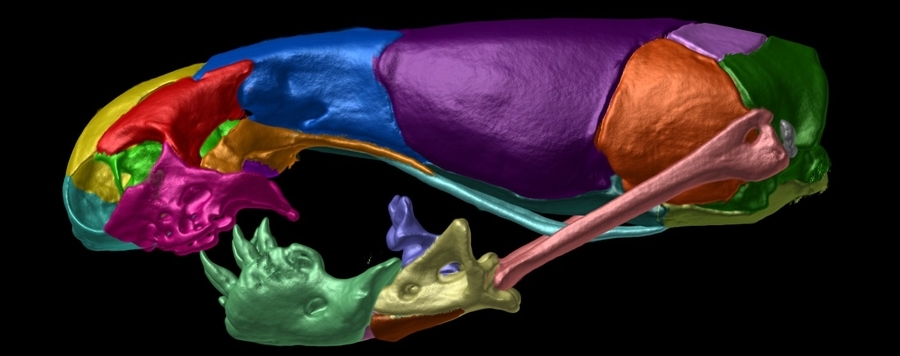
Picking up the threads: Comparative osteology and associated cartilaginous elements for members of the genus Trilepida Hedges, 2011 (Serpentes, Leptotyphlopidae)
The threadsnakes of the family Leptotyphlopidae have been historically neglected in terms of their natural history, ecology, systematics, and morphology. Given the relevance of morphological data for resolving systematic, evolutionary, and functional issues, we aimed to provide a detailed comparative description of osteology and associated cartilaginous elements for members of the genus Trilepida. Data were obtained through high-resolution computed tomography images, cleared and stained specimens, and radiography images of a total of 47 specimens and 12 species. Both cranial and axial osteology characters exhibited a relevant degree of intraspecific variation regarding qualitative and quantitative data associated with skull and vertebrae foramina and the shape of bony sutures and processes. The high representativeness of examined species and specimens allows us to provide a comprehensive discussion on the inter- and intraspecific osteological variation, as well as a compelling osteological diagnosis for the entire genus. Trilepida spp. differ from all Epictinae
by the presence of the following combination of characters: paired nasals, fused supraoccipitals (distinct from parietal, prootics, and otooccipitals), a single (fused) parietal without a dorsal fontanelle, and the basioccipital participating in the foramen magnum (except in Trilepida nicefori). Our results reinforce the need for integration of detailed anatomical traits to usually conserved external morphological data to provide accurate diagnostic features for Epictinae. In addition, new phylogenetic hypotheses or even taxonomic re-allocations may broadly benefit from these detailed comparative studies.





